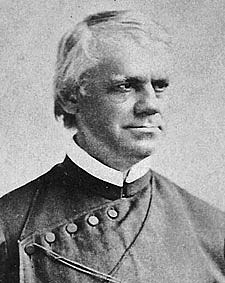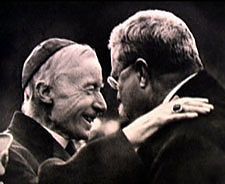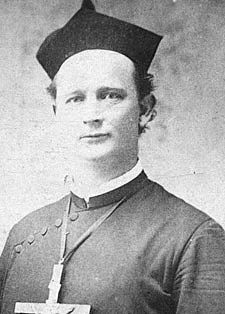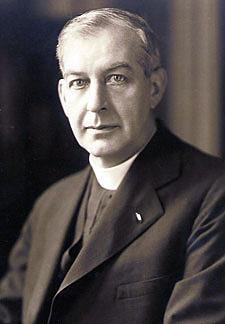July 15, 2011

Father Thomas A. Hall, C.S.P., may be the only Paulist serving as a military chaplain, but he continues the rich legacy between the Paulists and the armed services of the United States – the country the Paulists were founded to evangelize.
The story begins when future Paulist George Deshon would be accepted into the U.S. Military Academy at West Point in 1839. The roommate of Ulysses S. Grant, Mr. Deshon would graduate second in his class to William Franklin, who would become a Union general in the Civil War.
It was while returning to West Point as a faculty member in 1844 that Mr. Deshon, an Episcopalian by birth, began exploring Roman Catholicism. He converted to Catholicism in 1850, left the military and entered the Redemptorist novitiate two years later. By 1858, he had left the Redemptorists with four others to become one of the original Paulists.
During the Civil War that would soon follow the creation of the Paulists, Father Deshon was offered a commission as an army chaplain Archbishop John Hughes of New York.
“[Father Deshon] knew everyone in the military, and everyone know him,” said Paulist historian Father Paul G. Robichaud, who noted that Father Deshon turned the archbishop down due to the small size of the fledgling religious order.
Up until the Civil War, a general call went out for chaplains, and priests volunteered to answer the call, explained Father Robichaud.
“The Civil War was unique in that this is the first occasion Catholic priests served in an organized chaplaincy,” he said. “States were sending regiments and militias to service and were asked by the state governors to send chaplains.”

The first peacetime chaplains came in to service following the war, but there was no official liaison between the Catholic Church and the federal government to nominate, vet and assign Catholic priests as military chaplains.
This changed in the early 1900s. As ranking prelate in the American church, Cardinal James Gibbons of Baltimore, himself Civil War chaplain at Fort McHenry, wrote unofficial letters to President Theodore Roosevelt endorsing priests for military chaplaincy at the behest of his brother bishops from around the country. These messages were delivered by Paulist Father Alexander P. Doyle.
Cardinal Gibbons was no stranger to the fact that Father Doyle and President Roosevelt had first met when Father Doyle was serving at the Church of St. Paul the Apostle in New York City and the future president was the city’s police commissioner.
By 1903, Father Doyle was assigned as rector of the Apostolic Mission House on the grounds of Catholic University in Washington, D.C., which served to train diocesan priests as domestic missionaries, and President Roosevelt was in the White House after the assassination of William McKinley.

The two renewed their friendship, and in 1905 the bishops of the United States, led by Cardinal Gibbons, appointed Father Doyle to act as their representative to the federal government in dealing with Catholic military chaplains.
Father Doyle structured and unified the Catholic chaplaincy under what would become the Catholic Army and Navy Chaplain Bureau.
World War I saw five Paulists as military chaplains and the beginning of the National Catholic War Council, headed by Paulist Monsignor John J. Burke.
“This was the first national organization in the American Catholic church that existed on the level of the diocese,” said Father Robichaud. “It was a national structure in which everybody was invited to be a part.”
The structure worked so well that it was renamed the National Catholic Welfare Council after the war and would become what today is known as the National Council of Catholic Bishops.
In November 1939, Pope Pius the XII designated Francis Spellman, newly appointed Archbishop of New York to be his military vicar in the United States.

“The military ordinate became part of the Archdiocese of New York,” Father Robichaud explained, noting the ordinate would later become the Archdiocese for the Military Services.
During World War II, the Paulists supplied the largest percentage of military chaplains among all religious orders. Those Paulist chaplains not only served members of the U.S. military, but the Canadian and South African military as well.
Paulist chaplains continued to serve in the Korean and Vietnam wars, and in Desert Storm as well, including Father Hall. “My favorite assignment was serving on the staff of a three-star admiral who commanded the U.S. Naval Forces Central Command in the Persian Gulf,” recalled Father Hall. “The admiral was a convert to Catholicism and a man of deep, personal faith. It was a time when the U.S. was doing air strikes against terrorist sites in the region. I recall the great care that was exercised in an attempt to minimize collateral injuries. I saw humanity at its very best among the officers with whom I worked.”